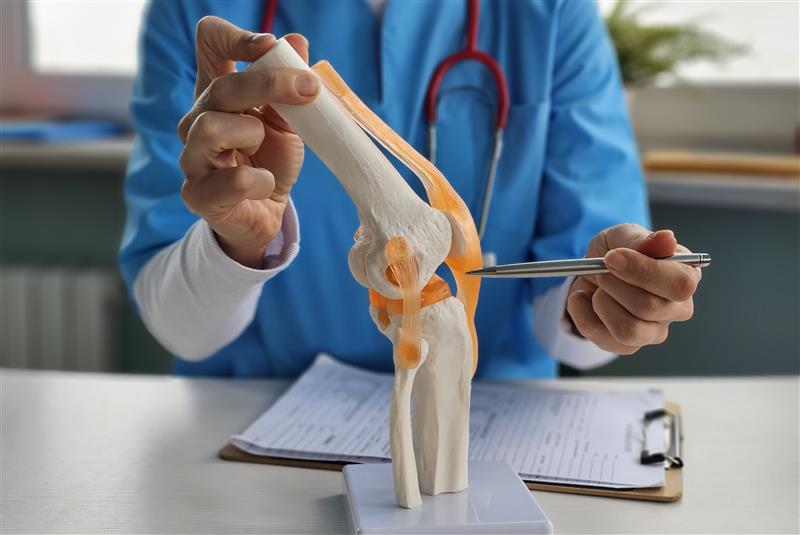Joint Replacement

What is Joint Replacement Surgery?
The goal of joint replacement surgery is to alleviate pain, improve mobility, and enhance the overall function of the joint, allowing patients to return to their daily activities with greater comfort and freedom.
Causes
Joint replacement surgery is often a last-resort option when non-surgical treatments such as medication, physical therapy, and lifestyle changes no longer provide relief. The primary causes that lead to the need for joint replacement surgery include:
- Osteoarthritis: A degenerative joint disease that causes the cartilage in the joint to break down over time, leading to pain, stiffness, and loss of motion.
- Rheumatoid Arthritis: An autoimmune condition where the body’s immune system attacks the joints, causing inflammation, pain, and eventual joint damage.
- Post-Traumatic Arthritis: Joint damage resulting from an injury or trauma, such as fractures or dislocations, that causes long-term pain and dysfunction.
- Avascular Necrosis: A condition where the blood supply to the bone is disrupted, causing bone tissue to die and leading to joint collapse.
- Congenital Joint Abnormalities: Some individuals are born with joint deformities that, over time, may require replacement surgery due to pain and functional limitations.
Symptoms
When conservative treatments are no longer effective, the following symptoms may indicate that joint replacement surgery could be the best course of action:
- Persistent Joint Pain: Chronic pain that is not relieved by rest, medications, or physical therapy.
- Stiffness and Limited Mobility: Difficulty moving the joint or performing everyday tasks, such as walking, climbing stairs, or getting in and out of a chair.
- Swelling and Inflammation: Continuous swelling or inflammation around the joint, which may worsen with activity or at the end of the day.
- Joint Deformity: Visible changes in the shape of the joint, which may be caused by arthritis or previous injury.
- Decreased Quality of Life: If the pain and limited mobility severely impact your ability to engage in daily activities, work, or hobbies, joint replacement surgery may be a solution to restore function.
The Approach to Joint Replacement Surgery
Joint replacement surgery is typically performed under general or regional anesthesia. The approach may vary depending on the joint being replaced and the surgical technique used. However, the general procedure involves:
- Incision: A small incision is made near the affected joint to allow access to the joint space.
- Removal of Damaged Joint: The damaged or arthritic joint is carefully removed, including the damaged cartilage and bone.
- Placement of Prosthesis: An artificial joint, usually made from metal, plastic, or ceramic materials, is then inserted to replace the damaged joint. The prosthesis is designed to mimic the natural movement and function of a healthy joint.
- Closing the Incision: The incision is closed using stitches or staples, and a dressing is applied to help prevent infection and manage swelling.
Joint replacement surgeries are often minimally invasive, meaning smaller incisions and less disruption to surrounding tissue, leading to faster recovery times. The surgery can be performed through various methods, including traditional open surgery or newer robotic-assisted techniques, which offer enhanced precision and potentially quicker healing.
Our Process for Joint Replacement Treatment
- Initial Consultation: Your journey begins with a detailed consultation, where our orthopedic specialists will assess your symptoms, medical history, and any imaging tests (e.g., X-rays or MRI scans) to evaluate the extent of joint damage and determine if joint replacement is necessary.
- Customized Treatment Plan: Based on your specific condition, we will create a personalized treatment plan that includes the most appropriate surgical options for your needs. We will also discuss any pre-surgery steps, including medication management, physical therapy, and lifestyle adjustments.
- Pre-Surgical Preparation: Prior to surgery, you will undergo a thorough pre-operative evaluation, including blood tests and an assessment of your overall health. Our team will provide detailed instructions to help you prepare for the surgery and optimize your recovery.
- Surgical Procedure: On the day of surgery, our highly skilled orthopedic surgeons will perform the procedure using the latest techniques and technology, ensuring precision and optimal outcomes. You will be closely monitored throughout the surgery to ensure your safety and comfort.
- Post-Surgery Recovery: After the surgery, you will be monitored in a recovery room to ensure proper healing. Our team will work with you to develop a post-surgery rehabilitation plan, including physical therapy, to help restore strength, mobility, and flexibility.
- Follow-Up Care: We will schedule follow-up appointments to monitor your recovery progress, address any concerns, and ensure the longevity of your joint replacement. Our goal is to help you return to an active, pain-free lifestyle as quickly as possible.
